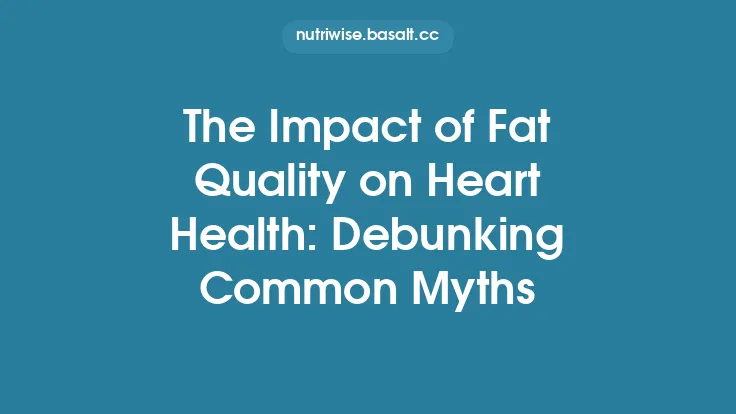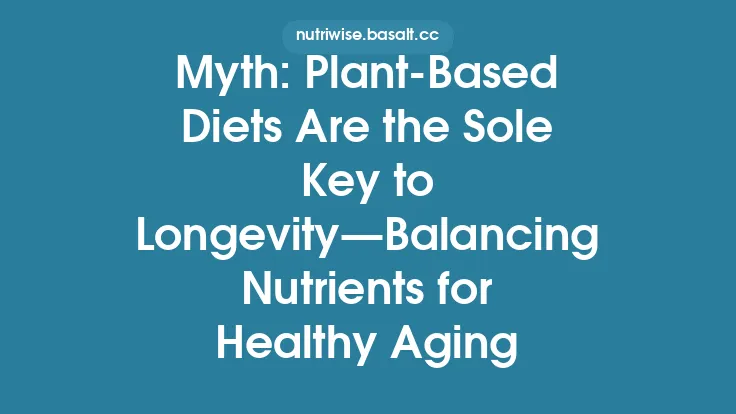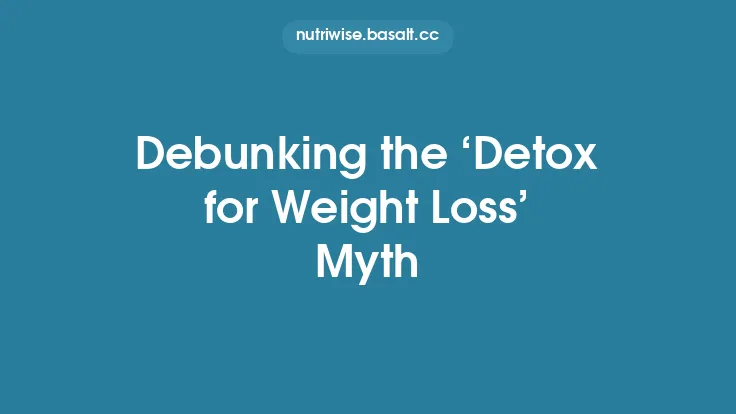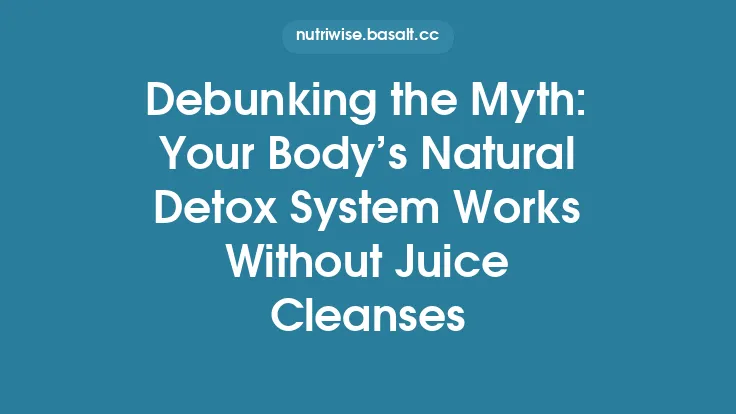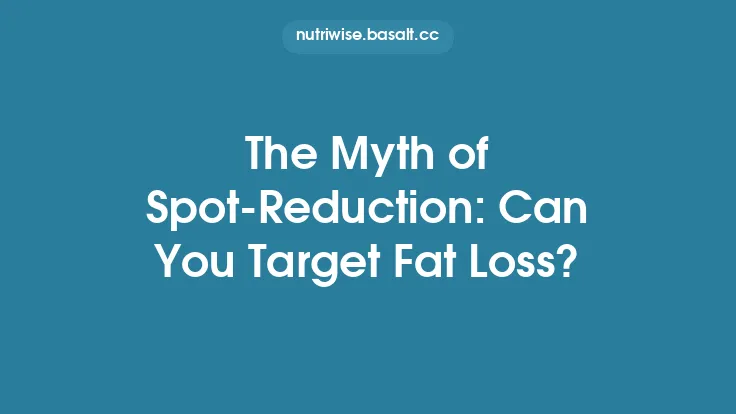When the word “fat” appears on a nutrition label, many of us instinctively reach for the low‑fat or fat‑free alternative, assuming it will automatically be the healthier choice. This reflex is rooted in decades of public health messaging that equated fat with heart disease, weight gain, and overall poor health. While it is true that excessive intake of certain fats—particularly trans fats and some saturated fats—can be harmful, the blanket demonization of all dietary fat is a myth that has persisted far longer than the science supports. In reality, healthy fats are indispensable for virtually every physiological process, and eliminating or severely restricting them can do more damage than benefit.
Understanding Dietary Fat: What It Is and How It Works
Dietary fat is one of the three macronutrients, alongside carbohydrates and protein, providing 9 calories per gram—more than double the energy density of the other two. Fat molecules are composed of carbon, hydrogen, and oxygen atoms arranged in long chains called fatty acids. These chains can vary in length (short, medium, long) and in the presence or absence of double bonds, which determines whether a fat is saturated, monounsaturated, or polyunsaturated.
The body cannot synthesize all fatty acids it needs; the essential fatty acids—alpha‑linolenic acid (ALA, an omega‑3) and linoleic acid (LA, an omega‑6)—must be obtained from the diet. Once ingested, fats are emulsified by bile salts, broken down by pancreatic lipase into free fatty acids and monoglycerides, absorbed by enterocytes, re‑esterified into triglycerides, and packaged into chylomicrons for transport through the lymphatic system into the bloodstream.
Types of Healthy Fats and Their Food Sources
| Fat Type | Chemical Characteristics | Primary Food Sources | Key Health Benefits |
|---|---|---|---|
| Monounsaturated Fatty Acids (MUFAs) | One double bond; liquid at room temperature | Olive oil, canola oil, avocados, almonds, peanuts | Improves lipid profile, reduces LDL‑C, supports endothelial function |
| Polyunsaturated Fatty Acids (PUFAs) | Two or more double bonds; includes omega‑3 and omega‑6 families | Fatty fish (salmon, mackerel), flaxseeds, walnuts, sunflower seeds, soybean oil | Anti‑inflammatory effects, essential for brain development, modulates blood clotting |
| Omega‑3 Long‑Chain PUFAs (EPA, DHA) | 20–22 carbons, multiple double bonds | Fatty fish, algae oil, fortified eggs | Cardiovascular protection, neuroprotection, visual health |
| Medium‑Chain Triglycerides (MCTs) | 6–12 carbon fatty acids; metabolized rapidly | Coconut oil, palm kernel oil, dairy | Quick energy source, may support weight management via thermogenesis |
| Saturated Fat (in moderation) | No double bonds; solid at room temperature | Grass‑fed beef, butter, cheese, dark chocolate | Provides structural lipids for cell membranes, supports hormone synthesis (when not excessive) |
It is crucial to differentiate these healthy fats from industrial trans fats (partially hydrogenated oils) and excessive saturated fats from processed meats, which have been linked to adverse health outcomes.
Physiological Roles of Fats: Why the Body Needs Them
- Cell Membrane Integrity
Phospholipids and cholesterol—both derived from dietary fat—are essential components of every cell membrane, influencing fluidity, permeability, and the function of membrane‑bound proteins.
- Hormone Production
Steroid hormones (e.g., cortisol, estrogen, testosterone) are synthesized from cholesterol. Adequate fat intake ensures the raw material for these hormones, which regulate metabolism, stress response, and reproductive health.
- Absorption of Fat‑Soluble Vitamins
Vitamins A, D, E, and K require dietary fat for efficient absorption. A low‑fat diet can lead to deficiencies, even if the vitamins are present in the food.
- Neurodevelopment and Cognitive Function
DHA, an omega‑3 PUFA, is a major structural component of neuronal membranes and retinal tissue. Adequate DHA intake is linked to improved memory, learning, and reduced risk of neurodegenerative disease.
- Energy Reservoir and Metabolic Flexibility
While carbohydrates are the body’s preferred quick‑energy source, fats provide a sustained energy supply during prolonged low‑intensity activities and fasting states. They also spare muscle protein from being used as fuel.
- Satiety and Appetite Regulation
Fat slows gastric emptying and stimulates the release of satiety hormones such as cholecystokinin (CCK) and peptide YY (PYY). This can help regulate overall caloric intake and prevent overeating.
The Consequences of an Overly Low‑Fat Diet
1. Nutrient Deficiencies
When dietary fat falls below ~15–20 % of total calories, the absorption of fat‑soluble vitamins can drop by up to 30 %. This is especially problematic for vitamin D, which many individuals already lack due to limited sun exposure.
2. Hormonal Imbalance
Insufficient cholesterol intake can impair the synthesis of cortisol and sex hormones, potentially leading to menstrual irregularities, reduced libido, and impaired stress response.
3. Impaired Cognitive Performance
Studies have shown that low‑fat diets, particularly those lacking omega‑3s, are associated with slower reaction times and poorer memory recall in both children and adults.
4. Increased Risk of Metabolic Dysregulation
Paradoxically, very low‑fat diets can raise triglyceride levels and lower HDL‑C (the “good” cholesterol), a pattern linked to higher cardiovascular risk. The body may compensate by increasing hepatic VLDL production when dietary fat is scarce.
5. Poor Satiety and Overeating
A diet low in fat often relies heavily on refined carbohydrates to meet caloric needs. The rapid digestion of these carbs can cause spikes and crashes in blood glucose, leading to increased hunger and potential weight gain.
How to Incorporate Healthy Fats Without Overdoing Calories
- Prioritize Whole‑Food Sources
Choose nuts, seeds, avocados, and fatty fish over processed snack foods that contain hidden trans fats or excessive sodium.
- Use Fat as a Flavor Enhancer, Not a Bulk Ingredient
A drizzle of extra‑virgin olive oil over roasted vegetables or a spoonful of nut butter in a smoothie can add richness without dramatically increasing portion size.
- Balance Omega‑3 and Omega‑6 Intake
Modern diets often contain a 15:1 ratio of omega‑6 to omega‑3, whereas a 4:1 ratio is considered optimal. Incorporate more omega‑3‑rich foods (e.g., sardines, chia seeds) while moderating high‑omega‑6 oils (e.g., corn, soybean).
- Mindful Portion Control
One tablespoon of oil (~14 g of fat) provides roughly 120 calories. Measuring portions helps keep total caloric intake in check while still delivering essential fatty acids.
- Combine Fats with Fiber and Protein
Pairing fats with high‑fiber foods (e.g., a salad with olive oil and beans) slows digestion further, enhancing satiety and stabilizing blood glucose.
Practical Tips for Everyday Meal Planning
| Meal | Example Incorporating Healthy Fats |
|---|---|
| Breakfast | Greek yogurt topped with walnuts, chia seeds, and a drizzle of flaxseed oil |
| Lunch | Mixed greens with grilled salmon, avocado slices, and a vinaigrette made from olive oil and lemon juice |
| Snack | Apple slices with almond butter or a handful of mixed nuts |
| Dinner | Stir‑fry using tofu, broccoli, bell peppers, and a sauce of sesame oil and tamari |
| Dessert | Dark chocolate (≥70 % cacao) with a sprinkle of toasted coconut flakes |
Revisiting Common Misconceptions
- “All saturated fat is bad.”
Recent meta‑analyses suggest that the relationship between saturated fat and heart disease is more nuanced, with the food matrix (e.g., dairy vs. processed meat) playing a critical role. Full‑fat dairy, for instance, contains bioactive compounds that may offset potential risks.
- “Low‑fat equals low‑calorie.”
Fat is calorie‑dense, but low‑fat processed foods often compensate with added sugars or refined starches, which can increase total caloric load and negatively affect metabolic health.
- “You can’t lose weight on a high‑fat diet.”
Weight loss is fundamentally about energy balance. A well‑structured diet that includes healthy fats can be satiating enough to reduce overall calorie intake, supporting weight loss while preserving lean mass.
- “Trans fats are the only harmful fats.”
While industrial trans fats are unequivocally harmful, certain saturated fats (e.g., stearic acid) have neutral effects on cholesterol. The key is to avoid artificially hydrogenated oils and focus on natural, minimally processed fat sources.
Bottom Line: Embrace Healthy Fats as a Core Component of a Balanced Diet
The “low‑fat” narrative that dominated nutrition advice for decades has been replaced by a more sophisticated understanding of how different fats interact with our bodies. Healthy fats are not merely an optional garnish; they are essential nutrients that support cellular structure, hormone production, brain health, and satiety. Rather than eliminating fat, the modern approach emphasizes quality over quantity—choosing monounsaturated, polyunsaturated, and appropriate saturated fats while steering clear of trans fats and excessive processed‑food sources.
By integrating these fats thoughtfully into meals, you can enjoy better nutrient absorption, stable energy levels, and long‑term health benefits without sacrificing flavor or satisfaction. The next time you see “low‑fat” on a label, pause and consider whether the product truly offers a nutritional advantage—or whether it’s simply a marketing ploy that may leave you missing out on the vital fats your body needs.
